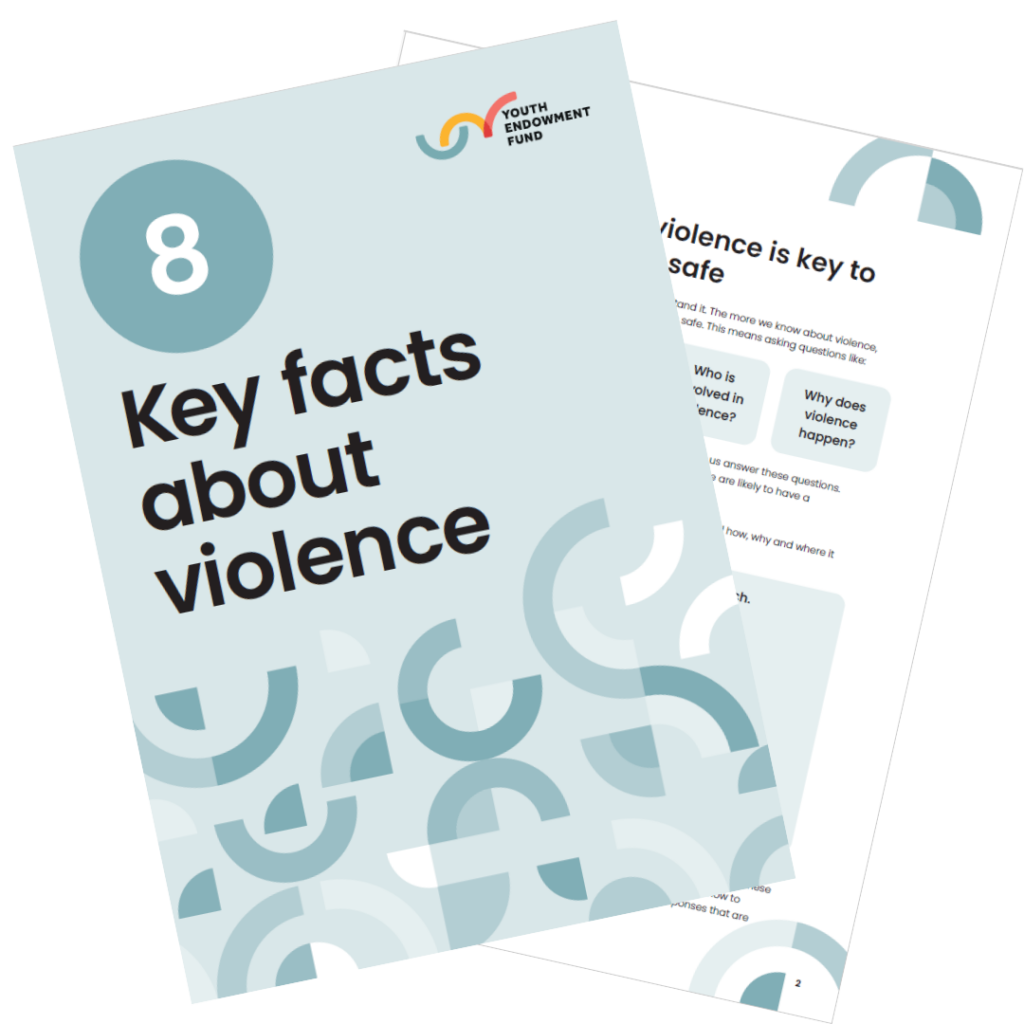

Understanding violence is key to keeping children safe
If we want to prevent violence, we need to understand it. The more we know about violence, the better we can focus our efforts to keep children safe. This means asking questions like:
- When does violence happen?
- Where does violence happen?
- Who is involved in violence?
- Why does violence happen?
Thankfully, there is a substantial evidence base that can help us answer these questions. Violence prevention strategies that are informed by this evidence are likely to have a bigger impact.
In this resource we look at the research on the nature of violence and how, why and where it happens. We provide eight simple descriptive facts about violence.
- Violence is preventable
- A small number of people commit a large proportion of violent crime
- Violence is concentrated in a small number of places
- Violence is more likely to happen at certain times of day, week and year
- Social groups and relationships play an important role in violence
- Violent offending rates tend to peak in late adolescence or early adulthood
- In the UK, children from some ethnic groups are disproportionately involved in the justice system and exposed to more violence than others
- Violent crimes cause the most harm
For each fact we discuss practical implications – what does it mean for how we prevent violence? We also share stories, reflections and provocations from experts who have put these insights into practice. We share these implications and reflections as examples of how to respond to these facts – there will be many alternative but valid responses that are not included in this report.
Get your copy of our latest research resource on the key facts about violence.

How did we create this resource?
It is difficult to conduct research on violence- it can be hard to measure. For example, police-reported violence can be sensitive to changes in policing practices and whether crimes are actually reported by victims. Nonetheless, we think there are some basic descriptive insights that emerge consistently enough to be called ‘facts’.
The facts in this resource will be most applicable to physical violence that happens in the community. Insights from this evidence might not apply to other forms of violence such as domestic abuse or sexual violence.
In places this document relies on research involving both children and adults. We present specific evidence on children where it exists and suggests different patterns for children and adults.
Some facts were initially derived from research in the USA where the availability of guns creates a different context. In these cases, we sought UK evidence and examples to test their applicability in our context.
Download the full report as a PDF to see the references and bibliography.
It’s important to understand what violence looks like in your context
These facts are good starting points for thinking about violence. They are generally true across different people, places, and times. For example, offending peaks somewhere in late adolescence or early adulthood for many people and in many places around the world (see fact 6).
However, these facts won’t be true for all people and places, all the time. There will be variation. For example, the offending rate will peak at slightly different ages in different places. Perhaps it will peak at 16 in one location and 21 in another. In a small number of places, it might peak outside of late adolescence and early adulthood altogether.
This means it’s essential to understand the specifics in your local context. They might be different to what is generally observed. The facts in this resource are a good starting point for thinking about violence in your area, but it’s important to check whether and how they apply.
